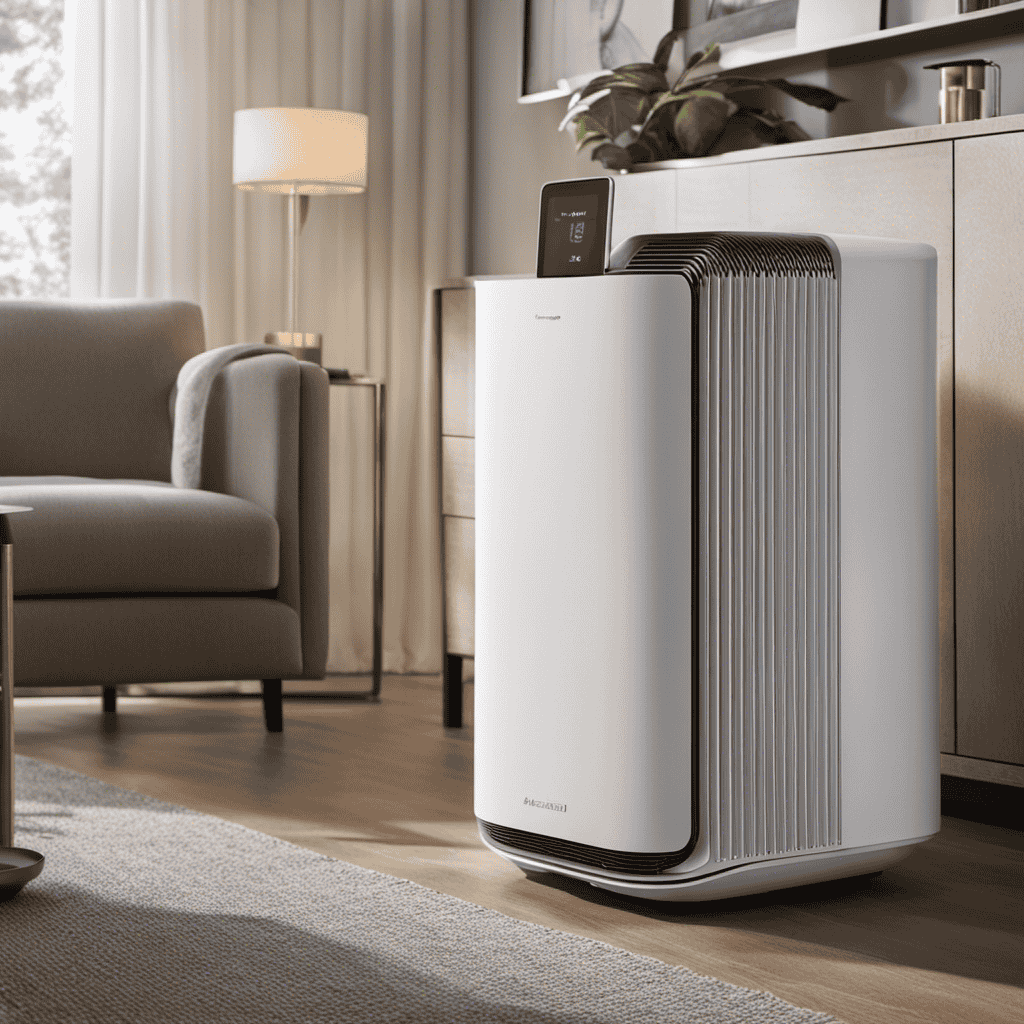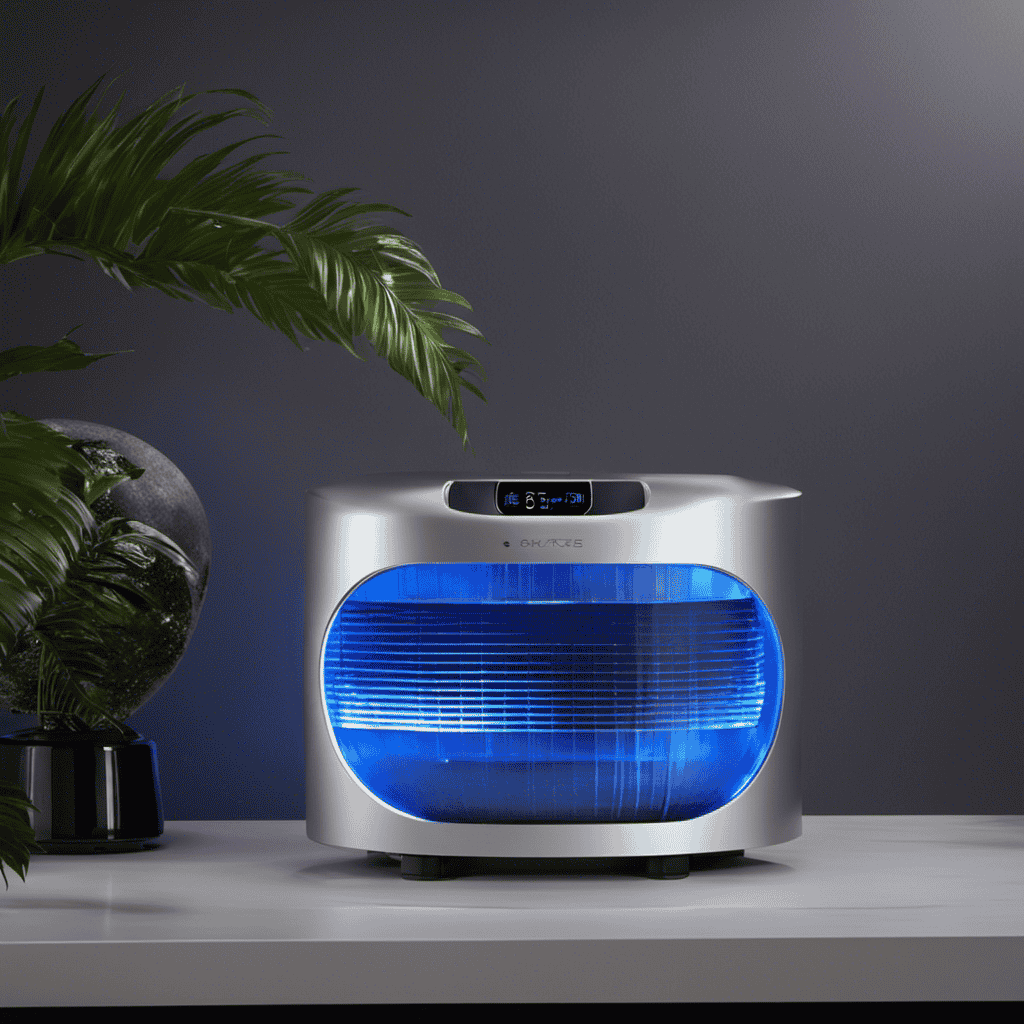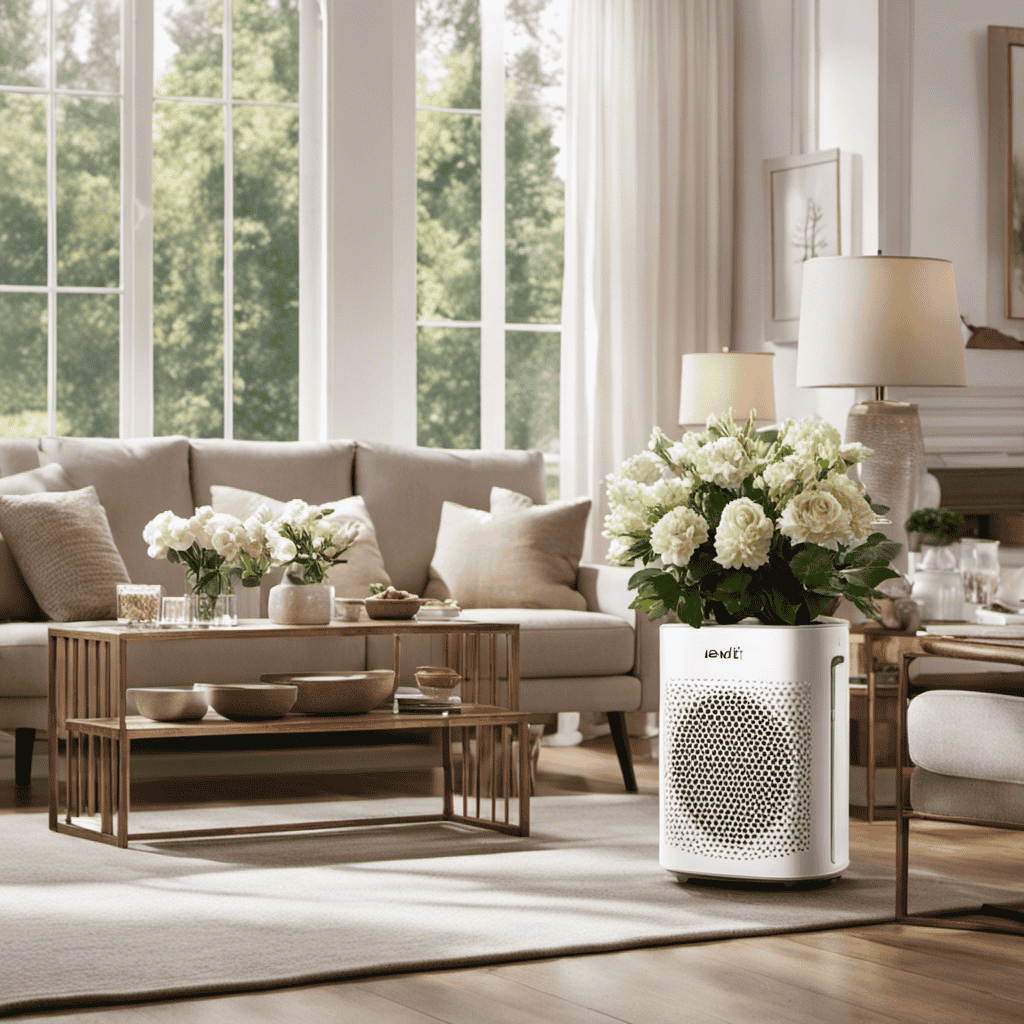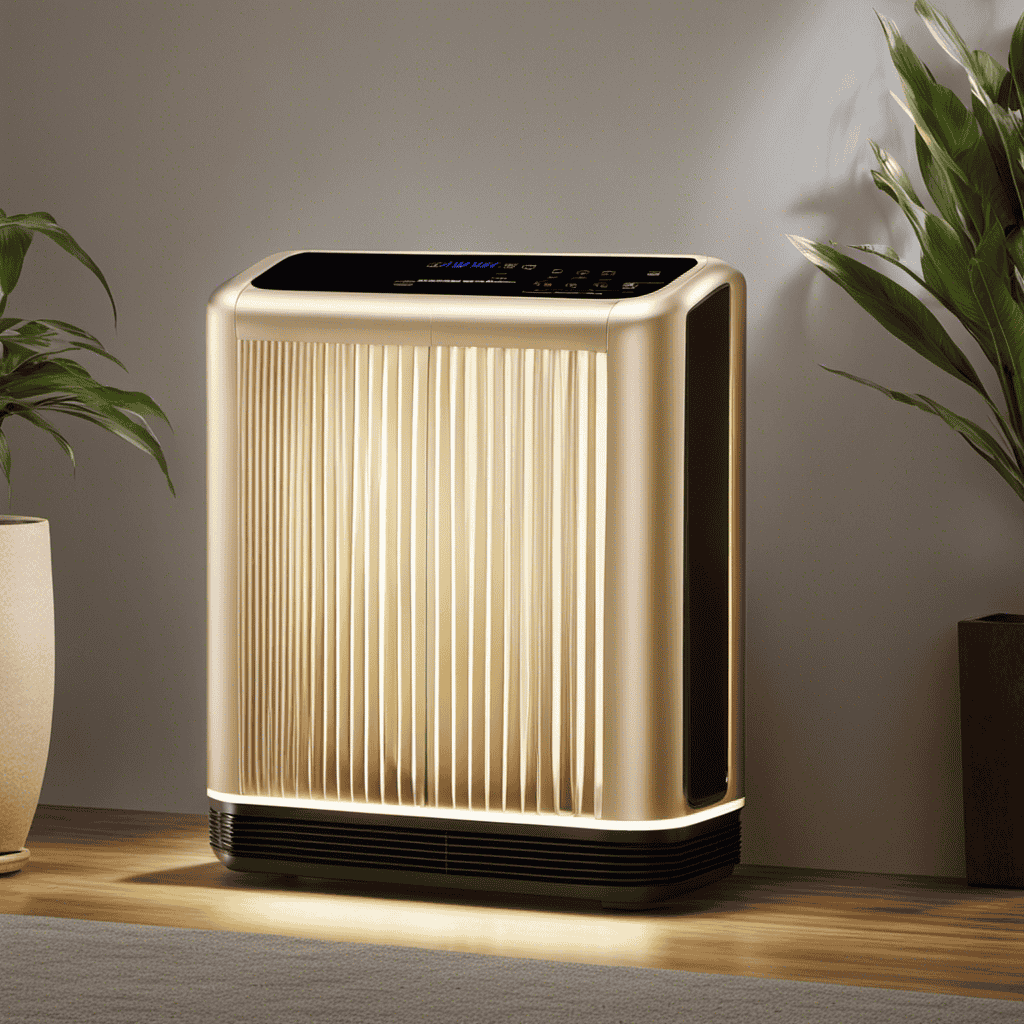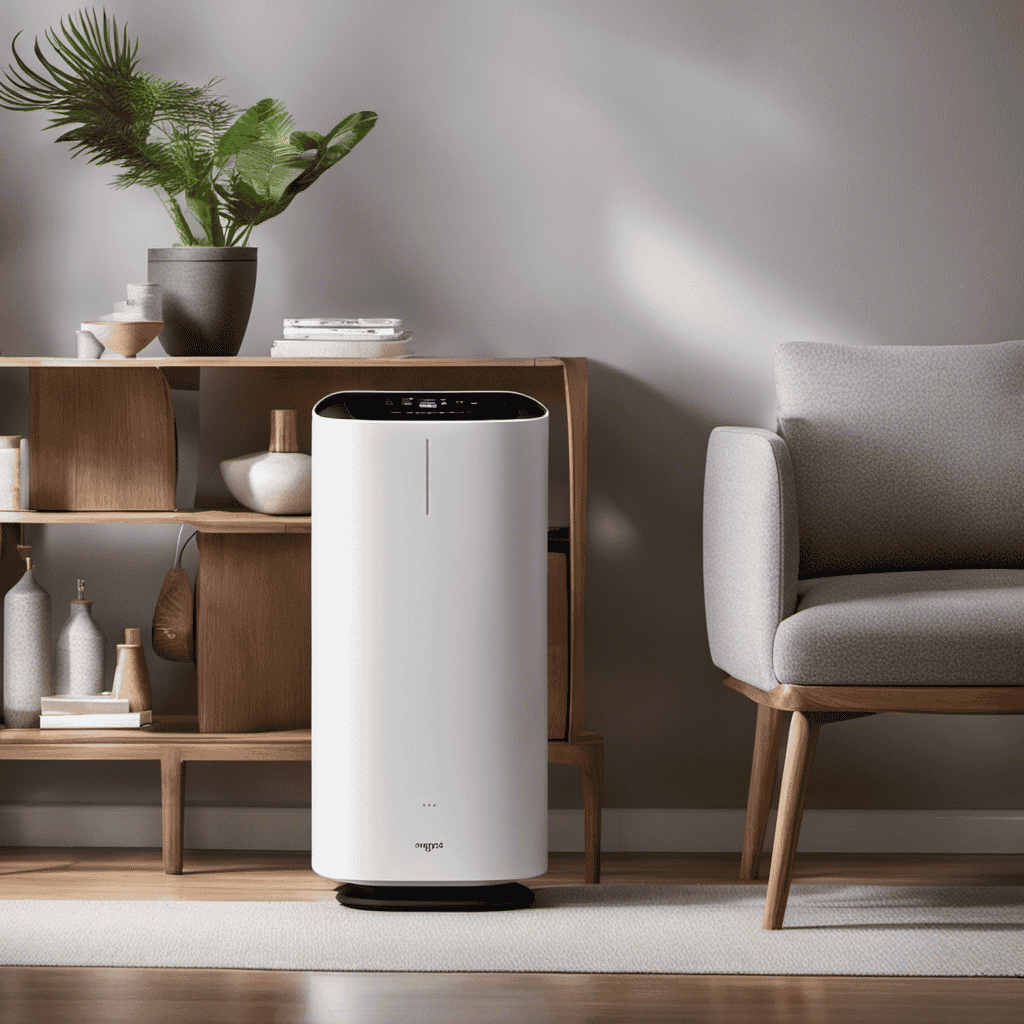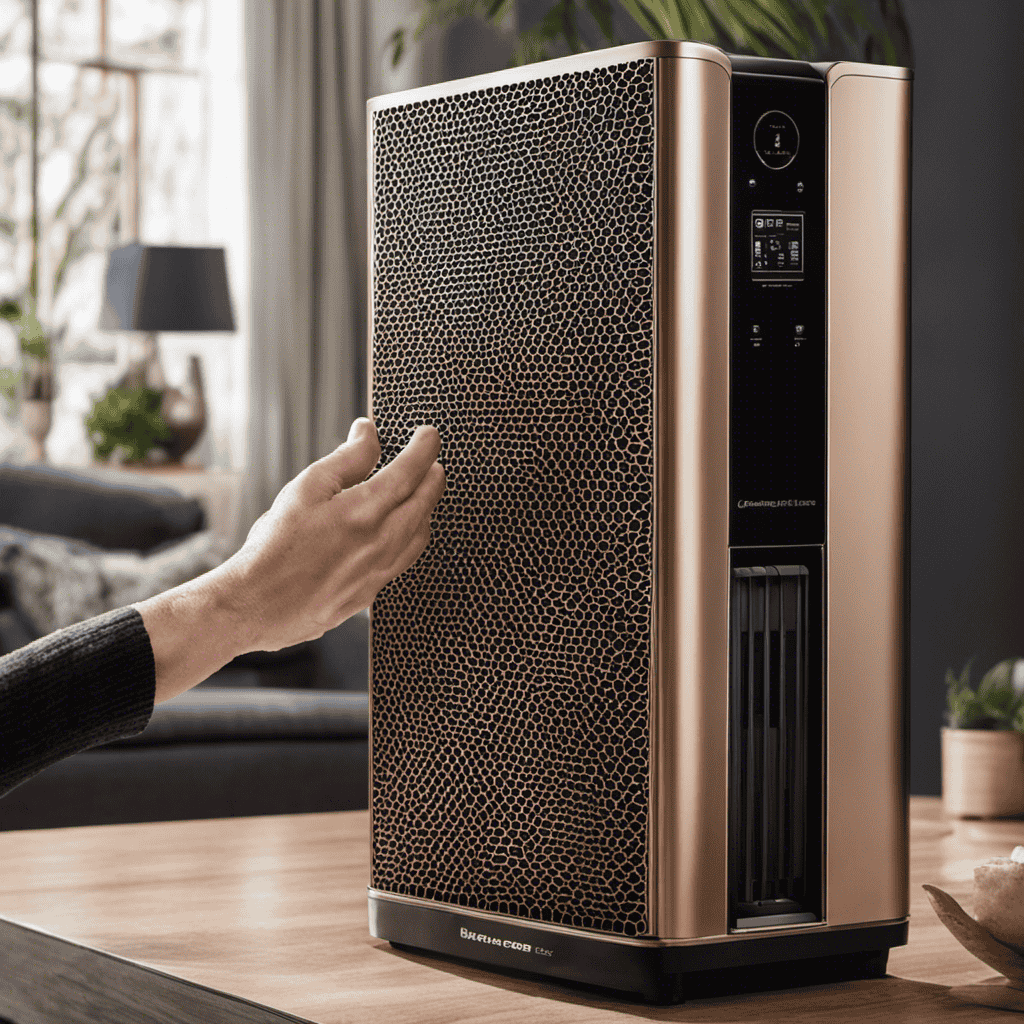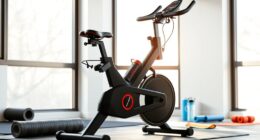As someone who is concerned about the air quality in my home, I frequently ponder the distinctions between an air purifier and a humidifier. While both devices are essential for enhancing indoor air quality, they have different functions and methods.
In this article, we will explore the functionality, air purification methods, humidification methods, cost considerations, and more to help you choose the right option for your needs.
Let’s delve into the world of air purifiers and humidifiers to make an informed decision.
Key Takeaways
- Air purifiers focus on removing airborne particles, while humidifiers solely increase humidity levels.
- Air purifiers use filters, such as HEPA filters and activated carbon filters, to trap and remove pollutants, while humidifiers use different methods like evaporative, ultrasonic, steam, or impeller humidification.
- Air purifiers remove allergens like dust mites, pet dander, and pollen, creating a healthier environment for individuals with allergies or asthma, while humidifiers alleviate dryness and improve respiratory conditions.
- When comparing costs, consider upfront cost, ongoing maintenance expenses, energy consumption, and noise levels of both air purifiers and humidifiers.
Functionality
If you’re wondering about functionality, an air purifier filters and cleans the air while a humidifier adds moisture to the air.
Indoor air pollutants can have a significant impact on our respiratory health. These pollutants, such as dust, pollen, pet dander, and mold spores, can trigger allergies and worsen respiratory conditions like asthma.
Air purifiers are designed to remove these pollutants from the air, improving the overall air quality in a room or space. They use various technologies like HEPA filters, activated carbon filters, and UV light to capture and eliminate harmful particles and contaminants.
On the other hand, humidifiers work by increasing the moisture content in the air, which can be beneficial for maintaining respiratory health. Dry air can cause dry skin, irritated nasal passages, and even worsen respiratory conditions. By adding moisture to the air, humidifiers can help alleviate these symptoms and create a more comfortable living environment.
While air purifiers primarily focus on removing airborne particles, humidifiers solely work to increase humidity levels. It’s important to note that these two devices serve different purposes and should not be confused. However, they can be used together to create a healthier and more comfortable indoor environment.
Purpose
The purpose of an air purifier is to clean the air, while a humidifier is used to add moisture to it. Both devices serve different functions when it comes to maintaining indoor air quality and promoting respiratory health.
An air purifier works by removing contaminants from the air, such as dust, pollen, pet dander, and even odors. It uses filters or other purification technologies to trap these particles and improve the overall air quality. This is beneficial for individuals with allergies or respiratory conditions, as it helps reduce the presence of irritants that can trigger symptoms.
On the other hand, a humidifier is designed to increase the humidity levels in a room. It adds moisture to the air, which can be particularly helpful in dry environments or during winter months when heating systems tend to dry out the air. By maintaining proper humidity levels, a humidifier can alleviate dry skin, dry throat, and nasal congestion. It can also provide relief for individuals with sinusitis or asthma, as dry air can exacerbate these conditions.
Air Purification Methods
When it comes to air purification, there are various methods that can be used to achieve cleaner and healthier air.
One popular method is using different types of filters for purification, such as HEPA filters or activated carbon filters. These filters effectively trap and remove pollutants from the air.
Another method gaining popularity is ionization. This method releases negative ions into the air to neutralize harmful particles and improve overall air quality.
These methods have their own unique benefits and understanding their differences can help in choosing the right air purification system for your needs.
Filter Types for Purification
You can choose between different filter types for purification in an air purifier or humidifier. Here are some options to consider:
-
HEPA filters: These are highly effective at capturing airborne particles, such as dust, pollen, and pet dander. They can remove particles as small as 0.3 microns.
-
Carbon filters: These filters are designed to absorb odors, chemicals, and gases. They are particularly useful for eliminating smoke and cooking smells.
-
Antibacterial filters: These filters have antimicrobial properties and can help inhibit the growth of bacteria, mold, and mildew. They are especially beneficial for people with respiratory conditions.
-
Electrostatic filters: These filters use an electrostatic charge to attract and trap particles. They are efficient at capturing larger particles but may not be as effective for smaller ones.
Now, let’s move on to the benefits of ionization and how it can enhance air purification.
Benefits of Ionization
Consider using ionization in your air purification system to enhance its effectiveness. Ionization techniques can greatly improve the quality of the air you breathe by eliminating harmful particles and pollutants. By incorporating ionization into your air purifier, you can experience cleaner and healthier air in your home or office.
Ionization works by emitting negatively charged ions into the air. These ions attach themselves to positively charged particles such as dust, pollen, and bacteria, causing them to become heavier and fall to the ground. This process effectively removes these harmful particles from the air, reducing the risk of respiratory issues and allergies.
To give you a better understanding of the benefits of ionization, here is a table comparing different ionization techniques and their effectiveness:
| Ionization Technique | Effectiveness |
|---|---|
| Needlepoint Ionization | High |
| Electrostatic Ionization | Medium |
| Photocatalytic Ionization | Low |
Humidification Methods
To understand the difference between an air purifier and a humidifier, it’s important to know the various methods of humidification. There are several types of humidifiers available in the market, each with its own unique way of adding moisture to the air.
Here are some common humidifier types:
- Evaporative humidifiers: These use a fan to blow air over a wet wick or filter, which then evaporates and adds moisture to the air.
- Ultrasonic humidifiers: These use ultrasonic vibrations to create a fine mist of water droplets that are released into the air.
- Steam vaporizers: These heat water to produce steam, which is then released into the air to increase humidity.
- Impeller humidifiers: These use a rotating disk to break water into tiny droplets, which are then released into the air as a cool mist.
On the other hand, air purifiers focus on improving indoor air quality by removing pollutants and allergens from the air. They come with various features such as HEPA filters, activated carbon filters, and UV-C light technology to capture and eliminate particles like dust, pollen, pet dander, and odors.
Understanding the different methods of humidification and the features of air purifiers helps in making an informed decision about which device is best suited for your indoor air quality needs. In the next section, we will explore the impact of these devices on indoor air quality.
Impact on Indoor Air Quality
When it comes to improving indoor air quality, there are a few key points to consider.
Firstly, airborne allergen removal is essential for individuals with allergies or asthma. It helps to reduce the presence of allergens such as dust mites, pet dander, and pollen. This is crucial in creating a healthier environment for those who suffer from respiratory issues.
Secondly, proper humidity level regulation is important for maintaining a comfortable living environment. It also helps to prevent the growth of mold and mildew, which can have negative effects on both health and the structural integrity of a building.
Lastly, comparing the health benefits of different methods can help determine the most effective solution for improving indoor air quality. By considering factors such as cost, efficiency, and long-term effects, individuals can make informed decisions about the best approach to take.
Airborne Allergen Removal
Air purifiers can help reduce airborne allergens, making it easier to breathe and creating a healthier environment. Here are four ways air purifiers contribute to air quality improvement and provide respiratory health benefits:
-
Removal of pollen: Air purifiers can effectively remove pollen particles from the air, reducing the risk of allergies and hay fever symptoms.
-
Elimination of pet dander: For individuals with pet allergies, air purifiers can help eliminate pet dander, which can trigger respiratory issues.
-
Reduction of dust mites: Air purifiers can capture and remove dust mites, known to cause allergies and asthma symptoms.
-
Filtering of mold spores: Air purifiers with HEPA filters can effectively trap mold spores, preventing their spread and reducing the risk of respiratory infections.
With these benefits, air purifiers play a crucial role in improving air quality and promoting better respiratory health.
Humidity Level Regulation
Maintaining a balanced humidity level in your home is essential for creating a comfortable and healthy living environment. Humidity control and moisture regulation play a crucial role in preventing various health issues and maintaining the integrity of your home. Too much humidity can lead to mold growth, while too little can cause dry skin and respiratory problems.
To help you better understand the importance of humidity control, here is a table comparing the effects of high and low humidity levels:
| High Humidity | Low Humidity |
|---|---|
| Promotes mold growth | Causes dry skin |
| Increases dust mite population | Irritates respiratory system |
| Creates a breeding ground for bacteria | Damages wooden furniture |
Maintaining a balanced humidity level through proper moisture regulation is key to a healthy and comfortable living space. Now, let’s explore the health benefits of using air purifiers and humidifiers in the next section.
Health Benefits Comparison
Now that we understand how humidity affects our health, let’s compare the effectiveness of air purifiers and humidifiers in improving air quality. When it comes to maintaining a healthy indoor environment, both devices play different roles.
Here are some points to consider:
- Humidifiers primarily focus on increasing humidity levels, which can alleviate dry skin, nasal congestion, and allergies caused by low humidity.
- On the other hand, air purifiers are designed to remove pollutants such as dust, pollen, pet dander, and even harmful gases from the air we breathe.
While humidifiers can help with certain health issues related to dry air, they do not directly address air quality concerns. Air purifiers, however, are specifically engineered to improve air quality by capturing and neutralizing airborne particles and pollutants.
Health Benefits
There’s no denying the fact that both an air purifier and a humidifier can greatly improve your overall health. While they serve different purposes, both devices contribute to creating a healthier indoor environment. Let’s take a closer look at the health benefits of each.
Humidity regulation is essential for maintaining good respiratory health. A humidifier adds moisture to the air, preventing dryness and reducing symptoms of respiratory conditions such as allergies, asthma, and sinusitis. On the other hand, an air purifier removes pollutants and allergens from the air, improving air quality and reducing the risk of respiratory issues.
To better understand the health benefits of both devices, let’s compare them side by side:
| Humidifier | Air Purifier | |
|---|---|---|
| Humidity | Increases moisture levels in the air | Does not affect humidity levels |
| Allergens | Reduces allergens by adding moisture | Removes allergens from the air |
| Respiratory | Relieves symptoms of respiratory conditions | Reduces risk of respiratory illnesses |
| Skin Health | Moisturizes skin and prevents dryness | Does not directly impact skin health |
| Sleep Quality | Improves sleep by reducing dryness | Does not directly impact sleep quality |
Maintenance Requirements
One important aspect to consider when using both devices is the maintenance required for optimal performance. While air purifiers and humidifiers serve different purposes, they both require regular maintenance to ensure they continue to function effectively. Here are some maintenance tips to keep in mind for both devices:
-
Clean the filters: Air purifiers have filters that trap dust, allergens, and other particles. Regularly cleaning or replacing these filters is crucial to maintain their efficiency. Humidifiers also have filters that can become clogged with mineral deposits or mold, so they need to be cleaned or replaced as well.
-
Check water levels: Humidifiers require water to function properly. It’s important to regularly check and refill the water tank to prevent it from running dry. This not only ensures optimal performance but also helps prevent damage to the device.
-
Clean the unit: Both air purifiers and humidifiers can accumulate dust, mold, and bacteria over time. Cleaning the external surfaces of the devices, as well as any removable parts, is essential for maintaining their hygiene and performance.
-
Follow manufacturer’s instructions: Each device may have specific maintenance requirements, so it’s important to read and follow the manufacturer’s instructions for cleaning and maintenance.
In terms of cost comparison, air purifiers tend to have higher upfront costs compared to humidifiers. However, the maintenance costs for both devices are relatively similar and mainly involve filter replacements and cleaning supplies. It’s important to consider both the initial cost and ongoing maintenance expenses when making a purchasing decision.
Cost Considerations
To make an informed decision, you should consider the cost of both devices, including the upfront cost and ongoing maintenance expenses. When it comes to cost considerations, there are a few factors to take into account for both air purifiers and humidifiers.
Firstly, let’s talk about energy consumption. Air purifiers typically have higher energy consumption compared to humidifiers. This is because air purifiers often need to run continuously to effectively clean the air, while humidifiers only need to run intermittently to maintain the desired humidity level.
Next, let’s consider noise levels. Air purifiers can produce varying levels of noise depending on the model and settings. Some air purifiers may have a low noise level, while others may generate more noticeable noise. On the other hand, humidifiers generally produce a gentle humming sound, which can be soothing for some individuals.
In terms of cost, air purifiers tend to have a higher upfront cost compared to humidifiers. However, it’s important to also consider ongoing maintenance expenses. Air purifiers typically require regular filter replacements, which can add up over time. Humidifiers, on the other hand, may require occasional cleaning and filter replacements, but these costs are generally lower compared to air purifiers.
Ultimately, when considering the cost of both devices, it’s important to weigh your specific needs and preferences, as well as the energy consumption and noise levels, to make the best decision for your situation.
Choosing the Right Option for Your Needs
When it comes to choosing the right option for your needs, two key factors to consider are air quality requirements and a health benefits comparison.
Understanding your specific air quality requirements, such as the need for dust or allergen removal, can help you determine which option will best meet your needs.
Additionally, comparing the health benefits of each option, such as reducing respiratory issues or improving sleep quality, can guide your decision-making process.
Air Quality Requirements
If you want to improve the air quality in your home, you should consider the specific requirements for air purifiers and humidifiers. Here are some important factors to consider:
-
Air quality monitoring: Look for an air purifier that has a built-in air quality sensor. This will allow the device to automatically adjust its settings based on the current air quality in your home.
-
Humidity control: A humidifier should have adjustable humidity settings so you can maintain the ideal humidity level in your home. Look for a model that can accurately measure and display the humidity level.
-
Filter replacement: Check if the air purifier has an indicator that alerts you when it’s time to replace the filter. This will ensure that the purifier is always working effectively.
-
Noise level: Consider the noise level of both the air purifier and humidifier. Look for models that operate quietly, especially if you plan on using them in your bedroom or living room.
Improving the air quality in your home not only provides health benefits, but it also creates a more comfortable living environment.
Now, let’s compare the health benefits of air purifiers and humidifiers.
Health Benefits Comparison
Now, let’s take a look at how air purifiers and humidifiers benefit your health.
Air purifiers work by removing pollutants and allergens from the air, improving overall air quality and reducing the risk of respiratory issues. They are particularly beneficial for those with allergies, asthma, or other respiratory conditions.
On the other hand, humidifiers help with moisture regulation in the air, adding moisture to dry indoor environments. This can alleviate symptoms of dry skin, dry throat, and dry nasal passages. Proper moisture levels can also help with respiratory health by reducing the risk of respiratory infections and soothing irritated airways.
Both air purifiers and humidifiers play a crucial role in maintaining a healthy indoor environment and promoting overall well-being.
Environmental Considerations
One important factor to consider is how both an air purifier and a humidifier can impact the environment. Here are some key points to keep in mind:
-
Air Quality Monitoring: An air purifier is designed to remove pollutants and allergens from the air, improving air quality. It uses filters or other technologies to capture particles like dust, pollen, and pet dander. On the other hand, a humidifier adds moisture to the air, which can help alleviate dryness and improve respiratory conditions. However, if not properly maintained, both devices can become breeding grounds for mold and bacteria, which can negatively affect indoor air quality.
-
Energy Consumption: Air purifiers typically require more energy to operate compared to humidifiers. This is because air purifiers have fans and motors that need power to circulate and filter the air. Humidifiers, on the other hand, usually have simpler mechanisms that use less energy. When choosing between the two, it’s important to consider the energy consumption and choose an energy-efficient model to minimize the environmental impact.
Common Misconceptions
Don’t believe the misconception that air purifiers and humidifiers are the same thing and serve the same purpose. While both appliances are designed to improve indoor air quality, they function in different ways and offer distinct health benefits.
One common misconception is that air purifiers and humidifiers are interchangeable. This is not true. Air purifiers are designed to remove pollutants, such as dust, allergens, pet dander, and smoke particles, from the air. They use filters or other technologies to trap and eliminate these harmful substances, resulting in cleaner and healthier air to breathe.
On the other hand, humidifiers are used to add moisture to the air. They increase humidity levels, which can help alleviate dry skin, nasal congestion, and respiratory issues caused by dry air.
Another misconception is that air purifiers and humidifiers offer the same health benefits. While both can contribute to improving indoor air quality, their impacts differ. Air purifiers primarily target airborne pollutants, reducing the risk of respiratory issues and allergies. Humidifiers, on the other hand, can help alleviate dryness-related symptoms, such as dry skin and irritated nasal passages.
Frequently Asked Questions
Can an Air Purifier Also Humidify the Air in a Room?
Yes, an air purifier can also humidify the air in a room, but it is not its primary function. Air purifiers are designed to remove pollutants and allergens from the air, while humidifiers add moisture to the air to alleviate dryness.
Both have their own benefits. Air purifiers can improve indoor air quality and reduce respiratory issues, while humidifiers can help with dry skin, allergies, and respiratory problems caused by dry air.
Do Air Purifiers Remove Odors From the Air?
Air purifiers can effectively remove odors from the air, making your space more pleasant and fresh. They work by filtering out particles, allergens, and pollutants that contribute to bad smells.
Unlike air fresheners, which simply mask odors, air purifiers actually eliminate them, improving the overall air quality.
On the other hand, humidifiers add moisture to the air, which can help alleviate dryness and improve respiratory health.
Both devices have their own benefits and serve different purposes in maintaining a clean and comfortable living environment.
Can a Humidifier Help With Allergies or Respiratory Issues?
A humidifier can be helpful for allergies or respiratory issues. It adds moisture to the air which can soothe dry nasal passages and reduce sinus congestion.
However, it’s important to note that a humidifier does not remove allergens or particles from the air like an air purifier does.
If you are specifically looking to address pet allergies, an air purifier designed for pet allergies may be more effective in removing pet dander and other allergens from the air.
Are There Any Health Risks Associated With Using an Air Purifier or Humidifier?
Personally, I have found some interesting information when it comes to the health benefits and maintenance requirements of using an air purifier or humidifier.
While both devices can improve indoor air quality, an air purifier focuses on removing pollutants and allergens from the air. This can be especially beneficial for individuals with allergies or respiratory conditions.
On the other hand, a humidifier adds moisture to the environment. This can be helpful in preventing dry skin, irritated nasal passages, and even reducing snoring.
However, it is important to note that these devices also come with health risks if not properly cleaned and maintained. Without regular cleaning, air purifiers and humidifiers can become breeding grounds for mold and bacteria. This can lead to respiratory issues and other health problems.
Can Using an Air Purifier or Humidifier Increase Energy Consumption in a Room?
Using an air purifier or humidifier can potentially increase energy consumption in a room. Both devices require electricity to operate, which can contribute to higher energy usage. However, the impact on energy consumption will vary depending on the specific model and usage patterns.
It’s important to consider energy efficiency ratings and choose a device that meets your needs without unnecessarily consuming excessive energy. Additionally, using an air purifier can help improve air quality by removing pollutants, while a humidifier adds moisture to the air.
Conclusion
In conclusion, understanding the difference between an air purifier and a humidifier is crucial in creating a healthy indoor environment.
While both devices have distinct functions, an interesting statistic to note is that according to a study by the Environmental Protection Agency, indoor air can be up to five times more polluted than outdoor air.
This emphasizes the importance of investing in the right option for your needs to improve indoor air quality and ultimately, your overall well-being.
